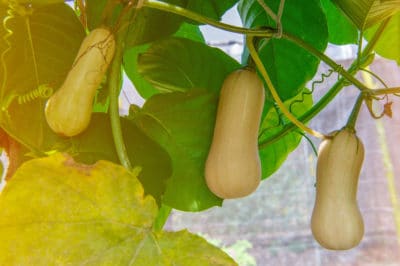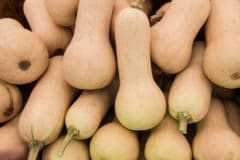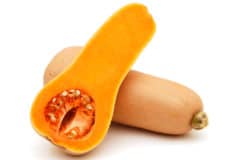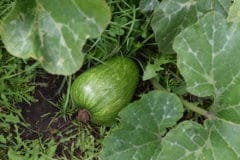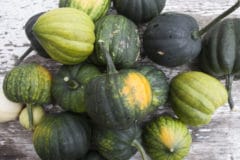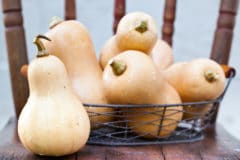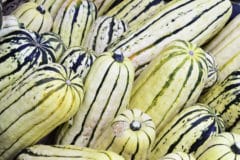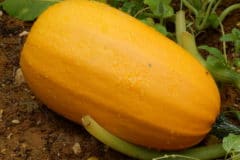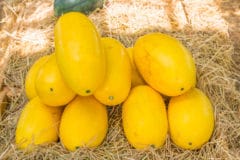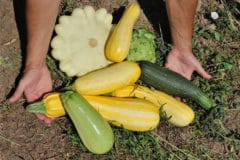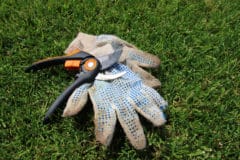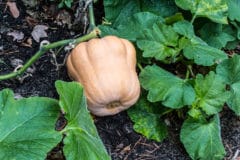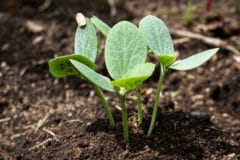Know if the Squash is Ripe
Unlike other squash varieties like pumpkin or Delicata, the color of the butternut is not always a good indicator of ripeness. While it should be a uniform shade of beige, there are other ways to tell if your squash has reached maturity.
- The squash is dense and feels solid.
- The skin is too hard to pierce with a fingernail.
- There is no green tinge anywhere on the fruit.
- The squash has a matte look.
Tip: If you are purchasing a butternut squash in a grocery store, there may be a shine due to being treated before shipment.
Harvesting the Butternut Squash
Once you have determined whether the squash fruits are ripe, you can harvest them. The easiest way to collect them is to hold onto the vine with one hand while cutting through the stem with the other. As you would with any other winter squash, leave several inches of stem attached to the fruit. Doing so prevents bacteria from entering the fruit itself.
Before using, brush any dirt or garden debris off the squash. If you are eating it right away, warm water will suffice. However, if you plan to store it longer than a few days, wash it with an antibacterial soap and dry with a clean cloth.
Tip: A mild bleach solution can also be used to sanitize the squash before storage.
Using Your Butternut Squash
Its versatility s one of the reasons why butternut squash is such a popular plant to grow. You can eat the flesh of the squash raw, or enjoy it roasted or steamed. Unlike spaghetti squash, it can also be pureed to use in soups or as a substitute for pumpkin in pies or muffins.
Whichever recipe you make, knowing how to pick a butternut squash from either the grocery or the field will significantly enhance the flavor of the recipe.
